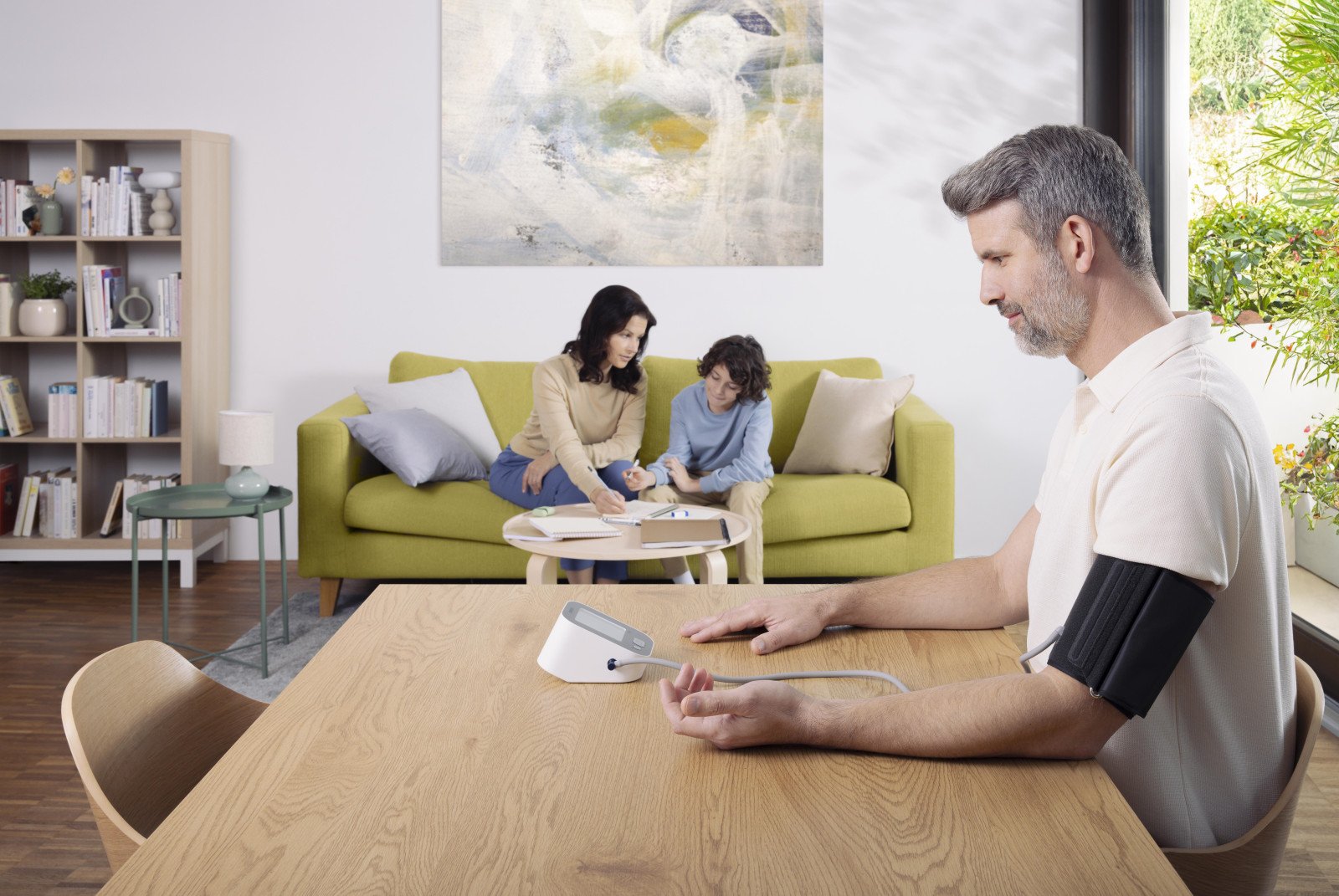
Cardiovascular Topics
Measuring nocturnal hypertension: revealing the full picture
Nocturnal hypertension: a significant risk for cardiac events

New cost-effective solutions for night-time blood pressure monitoring.¹
Nocturnal hypertension: a significant risk for cardiac events
The importance of ‘dipping’ cannot be underestimated. This is the decrease in blood pressure during sleep. The dip is the difference between average daytime systolic BP in comparison to sleep, with an accepted normal of 10–20%.²According to the ESC/ESH guidelines the threshold for nocturnal hypertension is ≥120/70 mmHg at night.³ Patients with nocturnal hypertension are at risk of cardiovascular (CV) events.
Nocturnal blood pressure - a better indicator for cardiovascular events
Consequently, optimal hypertension management should measure and control BP over 24 hours, including night-time and morning periods. Night-time and 24 hours BP have higher correlation with risk of cardiovascular events and organ damage, as seen in the graph.⁶
The gold standard for measuring nocturnal BP is an Ambulatory Blood Pressure Monitor (ABPM).³

Limitations of ABPM for nocturnal blood pressure measurement
Despite the advantages of ABPM, the availability is limited, and the devices are relatively expensive so not every patient with hypertension will have ABPM measurements and nocturnal hypertension can remain undetected. Next to this, The ABPM is often done for just one night, but ideally the measurements should be taken over a longer period. Furthermore, ABPM devices are cumbersome and often uncomfortable. It can cause sleep disturbance because of the device cuff inflation and frequency of measurements, resulting in a nocturnal BP value that is different from the true BP when the patient has an undisturbed sleep. Therefore, there are several reasons to believe that there are still unmet needs for obtaining high-quality BP values during sleep.
Home nocturnal measurements could be an alternative. The ESC/ESH guidelines indicate that the fact that nocturnal readings are missing in home blood pressure monitoring is a disadvantage. Detecting Nocturnal BP via home monitoring allows improving of the treatment to further reduce cardiovascular events³.
What are the benefits for your patients when monitoring nocturnal BP at home?
Multiple readings over an extended period.
Avoids white-coat reactions to BP measurement.
Can reveal masked nocturnal hypertension.
Increases the understanding of monitoring hypertension in patients.
Detects increased BP variability.
Predicts CV morbidity and mortality better than office-based BP monitoring⁷
NightView
Nocturnal blood pressure monitoring at home with minimal sleep disturbance
Home night-time and daytime BP measurements can support informed treatment decisions and disease management.
Clinically validated accuracy in different positions while being worn.
Minimal sleep disturbance: comfortable and silent pump inflates gently and reduces compression time to limit impact on sleep quality. In a recent study, the NightView was compared with a conventional upper arm-cuff system for nocturnal blood pressure measurement. Sleep disturbance was reported in less than 20% with NightView compared to 70% with an arm-cuff.⁸
OMRON connect: provides a quick overview of blood pressure patterns which can easily be shared with a doctor.

Symposium
Watch on demand our latest symposium: Day versus Night: New Perspectives on Stroke Prevention using Home Monitoring Tools recorded during the ESH2024 congress in Berlin, Germany
Overview of on demand recordings of OMRON symposiums and webinars
OMRON Academy
Learn more about Nocturnal Hypertension on our free e-learning platform: OMRON Academy
NightView

References
- Tadic, Marijana et al. “Isolated Nocturnal Hypertension: What Do We Know and What Can We Do?.” Integrated blood pressure control vol. 13 63-69. 21 Apr. 2020
- Bloomfield D, Park A. Night-time blood pressure dip. World J Cardiol. 2015;7(7):373–376.
- Williams B. et al 2018 ESC/ESH Guidelines for the management of arterial hypertension. The Taks Force for the management of arterial hypertension of the European Society of Cardiology (ESC) and the European Society of Hypertension (ESH)
- Alejandro de la Sierra, A., et al. (2014). Nocturnal Hypertension or Nondipping: Which Is Better Associated With the Cardiovascular Risk Profile? American Journal of Hypertension, [online] 27(5), pp.680–687
- Crinion, S.J., et al. (2017). Obstructive sleep apnoea as a cause of nocturnal nondipping blood pressure: recent evidence regarding clinical importance and underlying mechanisms. European Respiratory Journal, [online] 49(1).
- Sega R, et al. Prognostic value of ambulatory and home blood pressures compared with office blood pressure in the general population. Circulation. 2005 Apr 12;111(14):1777-83.
- George, J. and MacDonald, T. (2015). Home Blood Pressure Monitoring. European Cardiology Review, 10(2), p.95
- Imai Y, et all. Development and evaluation of a home nocturnal blood pressure monitoring system using a wrist-cuff device. Blood Press Monit. 2018 Dec;23(6):318-326.
